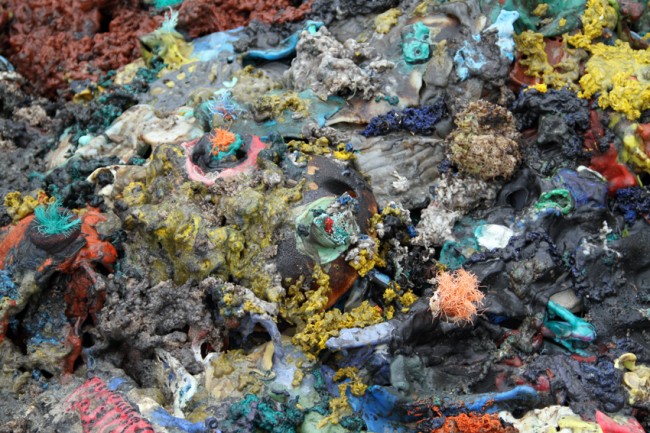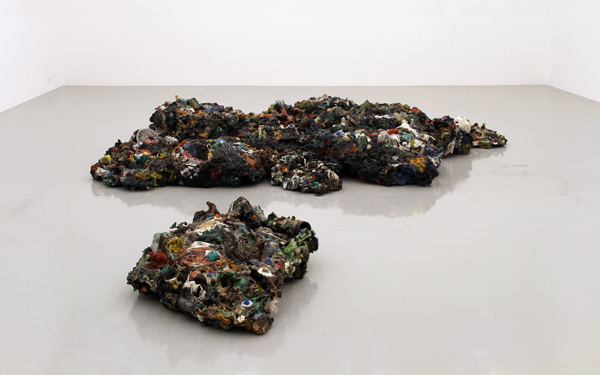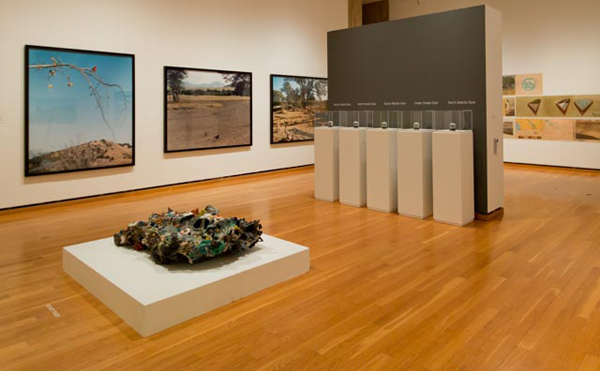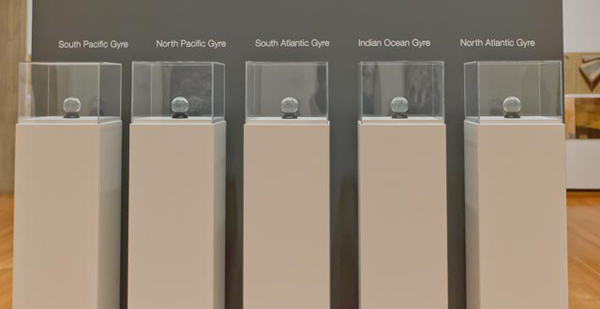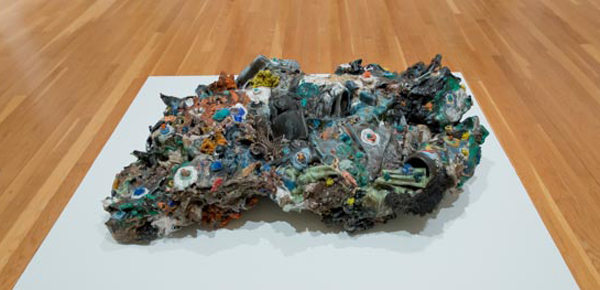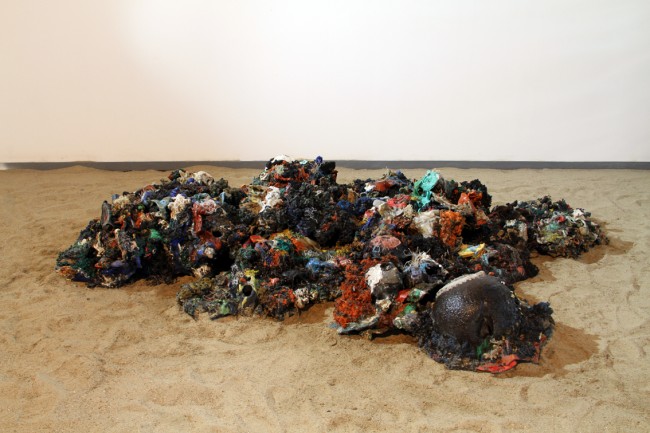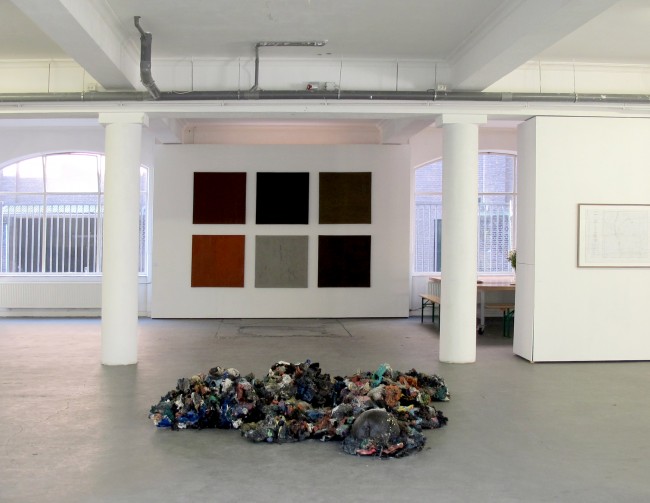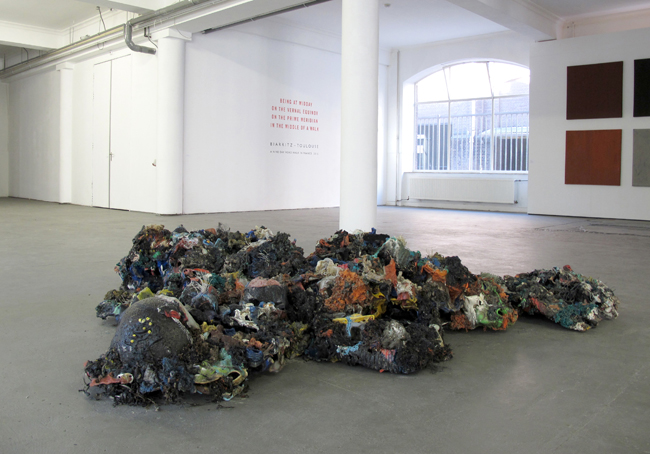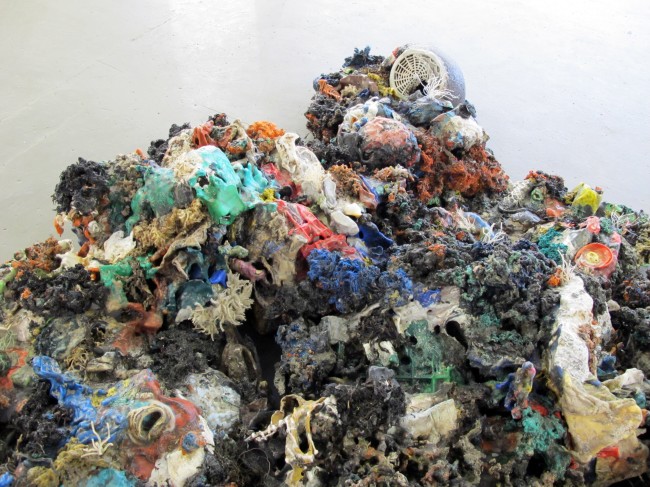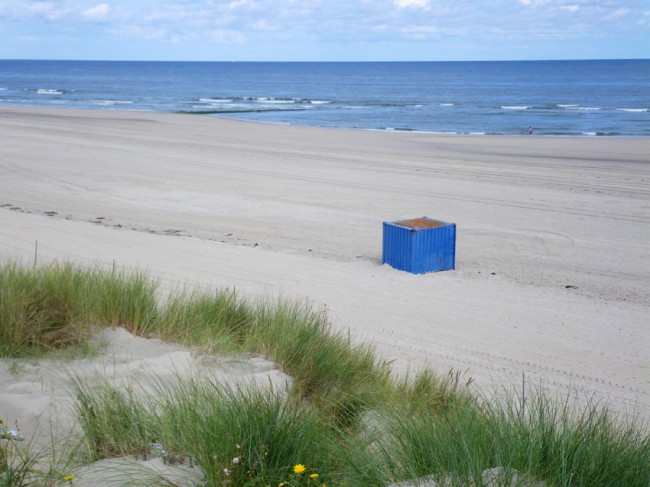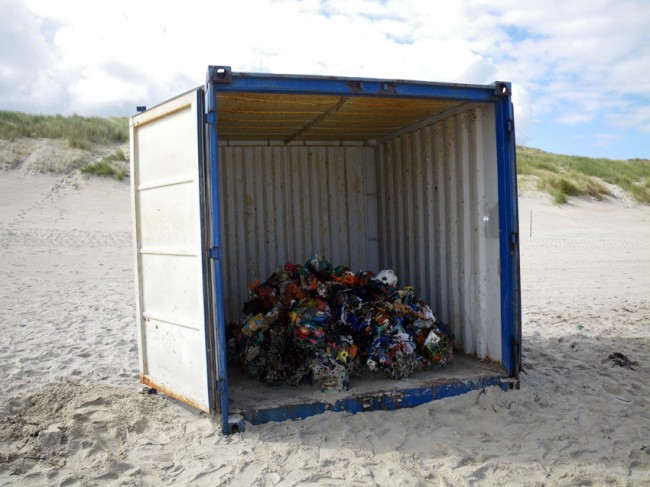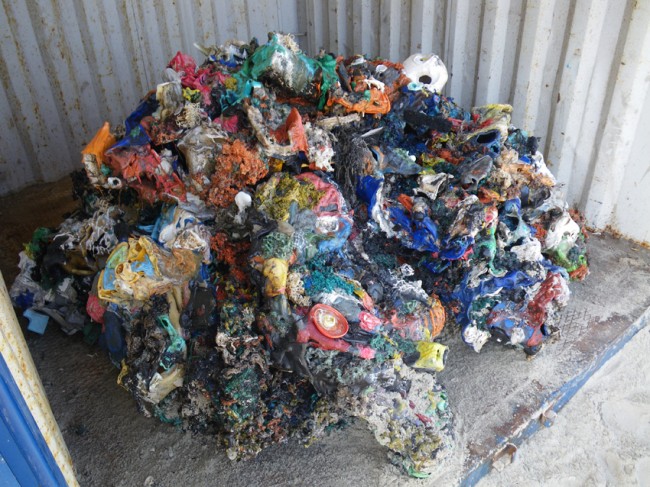‘Plastic Reef’ at Hordaland Art Center, Bergen, Norway
Opening: 11/01/2013 at 21:00
Open: 12/01 – 10/03/2013
HORDALAND ART CENTRE based in Bergen, Norway was established 1976 as the first artist run art centre in Norway. Its activities are based around the exhibition programme with equal emphasis on seminars, presentations and dialogue. Since 1987 HORDALAND ART CENTRE has hosted a Nordic residency programme, from 2008 also open to international artists, curators, writers and other art professionals.
Nav Haq wrote a text for the exhibition.
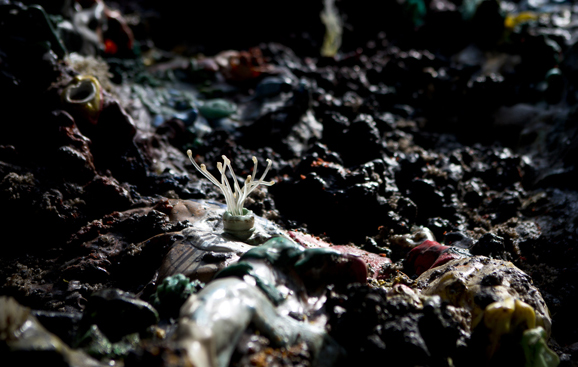
The Age of Plastic and After
It is the first magical substance which consents to be prosaic. But it is precisely because this prosaic character is a triumphant reason for its existence: for the first time, artifice aims at something common, not rare. And as an immediate consequence, the age-old function of nature is modified: it is no longer the Idea, the pure Substance to be regained or imitated: an artificial Matter, more bountiful than all the natural deposits, is about to replace her, and to determine the very invention of forms. A luxurious object is still of this earth, it still recalls, albeit in a precious mode, its mineral or animal origin, the natural theme of which it is but one actualization. Plastic is wholly swallowed up in the fact of being used: ultimately, objects will be invented for the sole pleasure of using them. The hierarchy of substances is abolished: a single one replaces them all: the whole world can be plasticized, and even life itself since, we are told, they are beginning to make plastic aortas.
– Roland Barthes, from ‘Plastics’, in Mythologies, 1957
There was little regards for the lifecycle of plastic, as the zenith of the Plastic Era occurred in the period known as the twentieth century – after the era of objects fashioned directly out of natural materials, and before the era of objects designed to be a Spime. Plastic seemed to have embodied the modern egalitarian dream by transforming something taken from nature into a myriad of possible objects for the everyday. Its invention proffered a sort of alchemy, forming infinite derivatives to match the aspirations of the twentieth century, with its technological advancements and its diversification of lifestyles. Its profound rise meant the uses of plastic entered every aspect of life in a celebration of its own prosaic, mechanically-reproduced abundance. The very idea of its own artifice was embraced somewhat reflexively in culture, and even the term ‘plastic arts’ was adopted simultaneously as a moniker for the art of the day.
The question remains as to why exactly human subjects returned plastic to the sea. At that time the material did not degrade and remained permanently in the ocean, creating a toxic floating landmass. Born of the petroleum that was formed from the plankton that emerged in the Earth’s primordial sea, the return of plastic polymers to the ocean was nothing other than an aberration. This ‘return’ to the ocean was ultimately an act against the idea of a lifecycle, as there was nothing to digest or transform it into something organic. It was as if simply removing it out of the sight of culture, and into the realms of the unknown, was enough. It was only after this point that the lifecycle of manufactured objects became a design issue. The Spime was conceptualised at the beginning of the twenty-first century by the renowned science-fiction writer and design theorist Bruce Sterling. It comprised a progressive vision towards the kind of object that can be tracked throughout its whole life and through space and time. [1] Objects could be traced from the point of their first virtual representation, to their manufacture, their subsequent ownership history, their physical location, right through to their eventual obsolescence and decomposition to raw material, ready to be used for making a new object. Objects were created to be recorded and archived in real time, thus being traceable at any given moment. ‘Things’ were never the same again.
The development of the Spime marked the acknowledgement of the new Human-Centred approach to design, and the new status given to objects in term of their use, meaning and value that followed brought us into the next age. From then on, all items were classified into two grand categories: 1) Human-Centred, those objects within the frame of human design and reference, and 2) Object-Centred, those objects that had their own existence outside of human acknowledgement or legitimation, within the realm of nature and the universe. [2] The Human-Centred acknowledgement of the existence of objects became an evolutionary design understanding. It was a revolutionary paradigm shift that required us to move away from the disregard of total object lifecycles towards the design of total object lifecycles. Human-Centric design would be tested against its effects on the Non-Human-Centric sphere.
Yet in the timeline of humanity it was the age of plastic that had the biggest effect on the Non-Human object world. The over-abundance of plastic objects was created in a context of non-acknowledgement towards the world outside of the human sphere. The oceans in particular being the ultimate place, furthest away from civilisation, that became the dark abyss for everything humanity wanted to discard. Giant concentrated masses of marine litter outweighing natural plankton many times over. Through a cruel irony, its molecular structure meant its brittleness would cause it to photo-degrade into fine grain-like pieces, much of them sinking, much of them floating, entering the food chain by being unwittingly digested by sea life. There were only rare instances in which this existing plastic would get collected and reused, such as by modest but well-meaning eco initiatives or businesses, and even by investigative artists – literally for ‘plastic art’.
The great paradigm shift, in its essence, was verbalised in an accord that stated that for a truly symbiotic existence between humanity and the universe, it was essential that things needed to exist and flourish outside of human knowledge and interference. It was also clear at this point of transition that this new era of design would cause a wholesale reassessment of the conditions created by Late Capitalism. Commodities would be only one stage in a complex cycle of materiality and non-materiality for objects, without further requirement for anything to be discarded. The economy shifted from being driven by the deliberate short lifespan of commodities, to being driven by the sustainment of the cyclicality of commodities. And the return of plastic into the ocean was eventually seen as symbolic of a cycle of failure, and, with it, of the delusion of the modern era.
[1] For Bruce Sterling’s compelling thesis on the Spime and its place in the future of design, read: Bruce Sterling, Shaping Things, MIT Press, 2005.
[2] This takes directly from the idea of ‘Object Oriented Theory’ that was outlined by the philosopher Graham Harman in his book Tool-Being: Heidegger and the Metaphysics of Objects, Open Court, 2002. This theory describes itself as a metaphysical movement that rejects the privileging of human existence and anthropocentrism over the existence of non-human objects. It is also worth reading entries related to this subject on his blog: http://doctorzamalek2.wordpress.com/.
